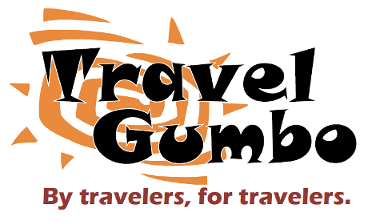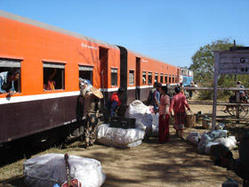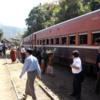The earthquake should have been a clue. But having rather enjoyed the ride, as I have since childhood in an earthquake-prone part of the world, it didn't occur to me that it might be a warning. I should have listened.
I'm seriously attracted to former colonies, especially the lingering atmosphere engendered by Victorian remains of empire, steeped for many decades in tropical climates and put to use by the formerly governed. The result is always what I think of as perfectly romantic and picturesque. To a reader of both history and fiction there's nothing better. Burma is just such a place.
Back to the picturesque Shwenyaung station. The first clue is always the sound of windows rattling. And lovely windows they were, with shutters. I was standing next to the ticket window which had yet to open. The rattling began and it took a few seconds to realize that it wasn't the sound of freight being piled on the platform or children playing. Looking up coincided with a rolling motion as I looked down the covered but otherwise open station building and could see, as well as feel, the earth move. Screams tend, I think, to be spontaneous in such situations. Not my screams, as far as I could tell, but of ladies around me. But everything settled pretty quickly into just looking up sharply as aftershocks did their thing.
(Burma, vendor selling flowers to train passengers)
Upper class ticket purchases, it turned out, were not made at the window but in a room alongside, where I was ushered with ceremony, business transacted and ticket produced. Then I waited on a bench between the office and the tracks, entertained by the growing piles of goods and baggage and the variations of local dress of our fellow travelers. The train arrived and I boarded along with other westerners, some more affluent-looking Burmese and a couple of monks, the upper class car sandwiched among several ordinary class carriages. As I began to zero in on a possible seat it was then that the state of the ancient car began to come into focus. It was filthy. The seats were in disrepair and the enormity of that disrepair would become clearer as the train moved off in the direction of my destination, Kalaw, on the line to Thazi.
The seats were old recliners, kind of like those early 20th century chairs that recline to fixed positions as the mechanism finds the next slot. Clunk. Many of these, however, were broken and permanently reclined to one degree or another and, by the time one realized that the chosen seat was broken, so had everyone else so the upright seats were in the possession of other passengers who were in no way predisposed to give them up. So, not so bad you say? Ha! Just wait. Could it be worse? Of course it could.
As the train began to pick up speed (“speed” being relative only to standing still) the car began to roll side to side. Alarming so. So much that one could not help but immediately wonder how the train could possibly stay on the tracks. Well, I was told, sometimes it didn't, one hoped for the best. To add to the lively motion the adjacent cars didn't roll with ours but exactly opposite. You can get a sense of it by forming your hands into tubes, put them end to end up to your eye, and by turning one hand one way and the other hand the other way you can see how at one point the tubes (the cars) coincide for an instant until continuing on their trajectory. At the far end of the roll only a sliver of light through the cars on one side and then the other indicated the opening meant to be walked through. There were vendors on the train that had to go from car to car to conduct business and they were incredibly adept at leaping through the hole at the instant when the 2 cars coincided along with their goods. It was entertaining in the way a knife-throwing act done well can be entertaining, thrilling.
(Burma, Inle Train)
It was good having these men & women to watch. It was a distraction from the fact that many of the seats had become unbolted from the floor. So while one’s back tried unsuccessfully to cope with the never-ending twisting motion of sitting upright with no support as the car rolled side to side there was also the unsettling creeping of the seat on the floor. The memory of long-haul flights in economy took on the sheen of pure luxury.
The train is the only practical mode of transportation for many people along the line that runs through the mountains. It’s used in pursuing their livelihoods, transporting goods to markets. The ordinary class carriages filled to capacity with a great variety bundles and people, leaving only upper class with room for the overflow. So as we went along, with each stop more and more baskets and bales were loaded, starting at the doors and slowly filling all available space, the owners of the goods retiring to the area just outside, then the inside of the of the car. No one seemed to mind the encroachment and I’m sure the people sitting on their produce were more comfortable by far than those of us silly enough to think that upper class was a good idea.
(Burma, train to Maymyo)
After several hours spent in the aforementioned manner, riding through stunning tropical mountain scenery, I arrived in Kalaw. There were taxis waiting at the station, two-wheeled horse-drawn carts that had seen far better days but were the most luxurious of rides after the one I’d just endured.
Mark Smith, on his all-things-trains website, says of train travel in Burma “The journeys are as much an adventure as the country itself.” If alternating pleasure and pain are the stuff of adventure then he's absolutely right. Fortunately, I found pleasure much more the norm in the weeks I spent in the country. And besides, how often do we get to experience something we sincerely believe to be the world's worst and live to tell the tale!
To see a gallery of photos of the Burma train ride, click here.
To read more of PortMoresby's contributions, click here.
Photos are used with permission, ©Mark Smith, from his website. http://www.seat61.com/ . His Burma page is here.







Comments (11)